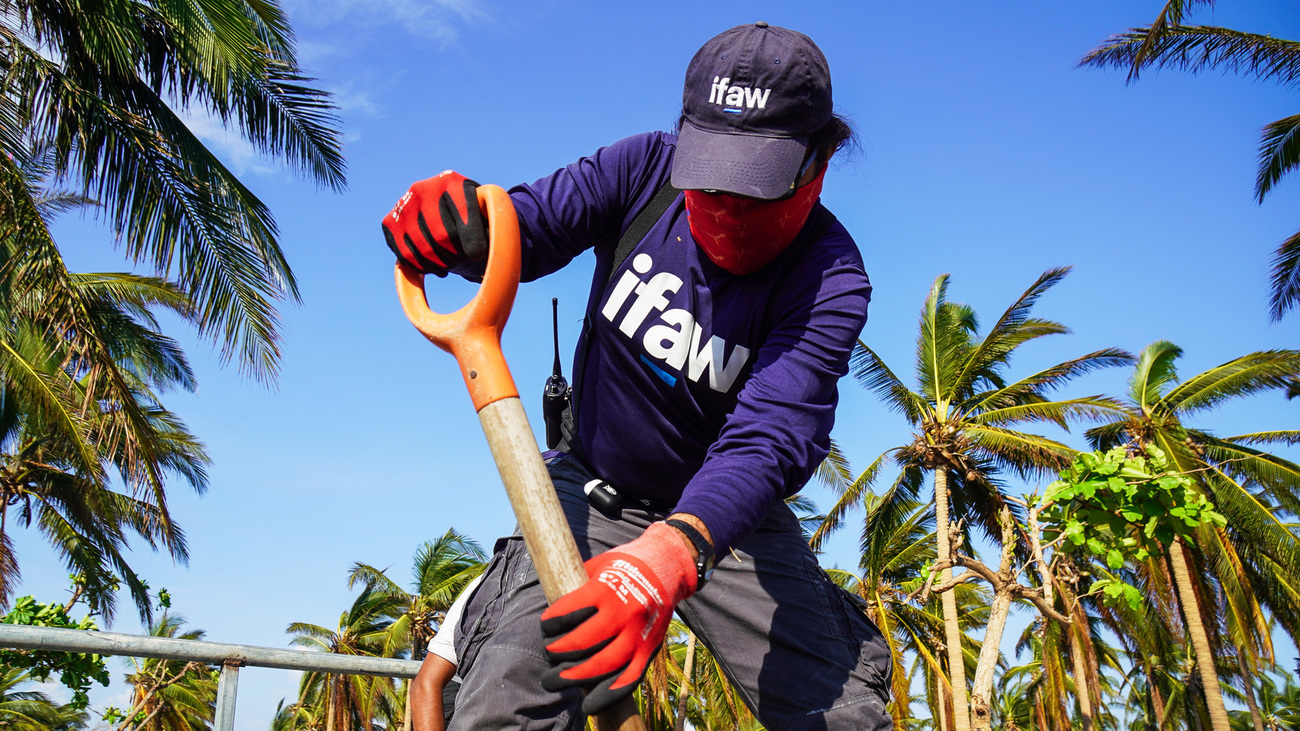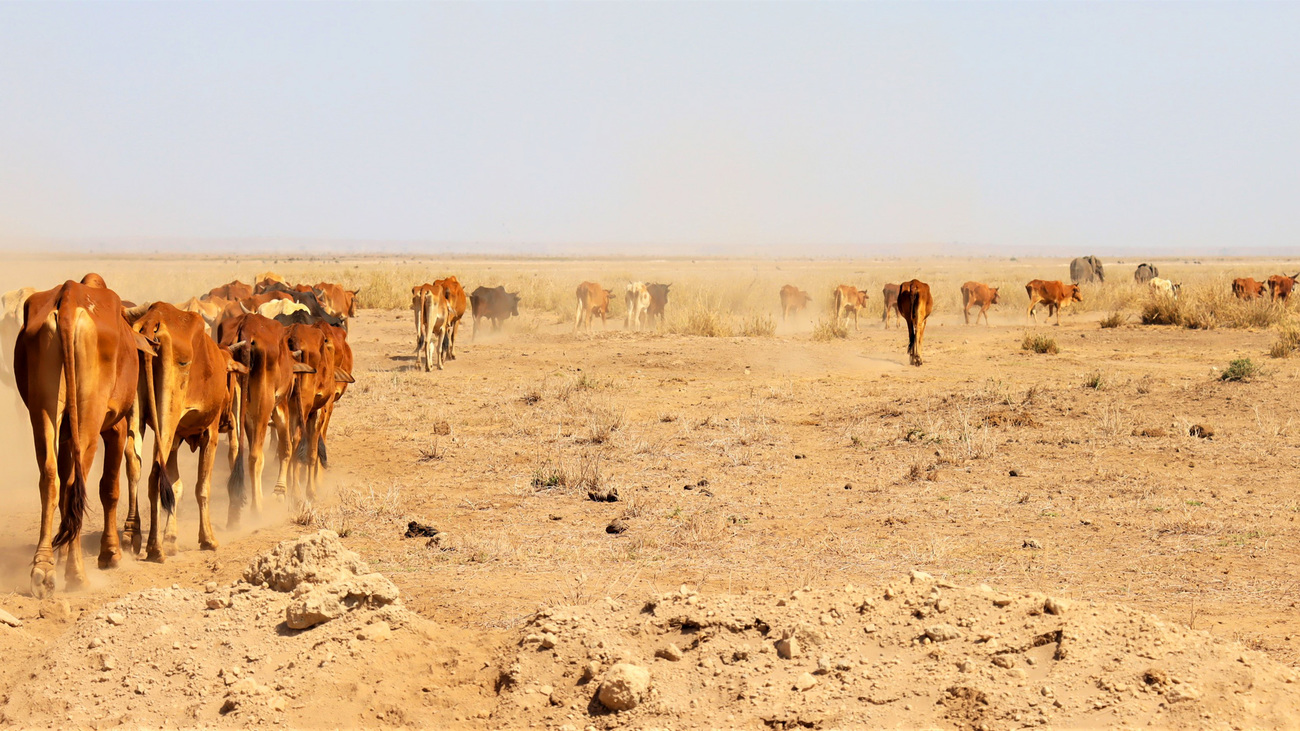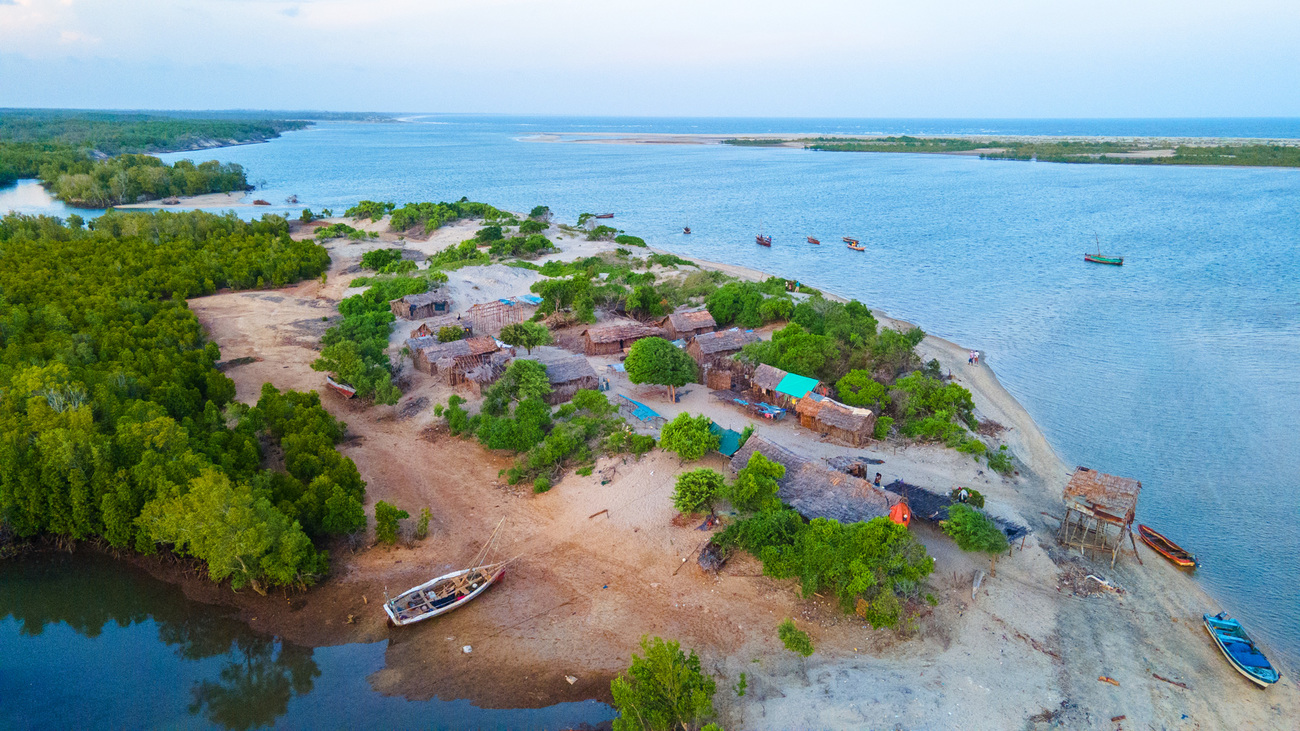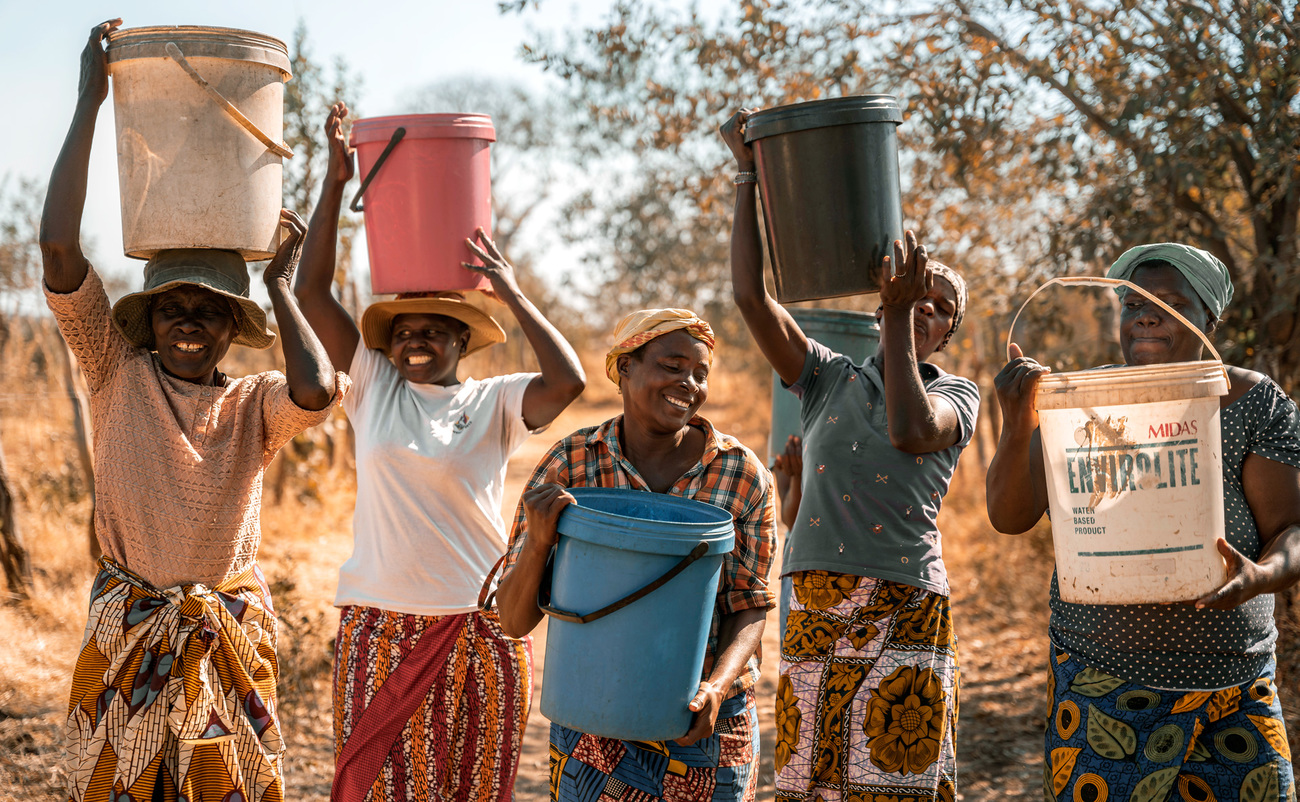How does climate change affect us?
How does climate change affect us?
It’s no secret that we’re facing an urgent climate crisis and that anthropogenic climate change significantly impacts and harms our planet.
The impacts of climate change are far-reaching for the planet, people, and animals, too. And they’re not all immediately obvious.

While we can understand that climate change is a huge problem and that urgent action is needed, sometimes it can be difficult to see how it affects our lives on a daily basis. Climate change has a huge impact on the air we breathe, the food we eat, the water we drink, the weather that has the potential to damage our homes and communities, and the wildlife with which we share our planet.
As a conservation and wildlife rescue organisation, IFAW is dedicated to mitigating and adapting to the effects of climate change. Our work benefits animals, people, and the planet, with the goal of building a future where animals and people can thrive together. Learn more about our climate work and how you can get involved.
How does climate change affect people and the world around us?
Climate change has far-reaching impacts on humans and the world around us. Let’s explore some ways climate change affects us that you may not have considered.
Warming temperatures
One of the most widely known impacts of climate change is rising temperatures worldwide, which endanger the lives of animals and people. The global average surface temperature has risen by 0.11 degrees Fahrenheit or 0.06 degrees Celsius per decade since 1850, which may not seem like a lot—the numbers can be hard to comprehend. But when you think about how the top 10 warmest years in recorded history have all occurred within the past decade (2014 to 2023), you can gain a better sense of just how drastic this change is.
Increasingly frequent and sudden changes in temperature put vulnerable groups at high risk. In unexpected heat, it becomes harder for our bodies to regulate our internal temperature, leading to illnesses—including heat exhaustion and stroke—and sometimes even death.
But climate change doesn’t just mean temperatures are warming. Climate change can also cause extreme cold weather events in some places. Sudden temperature drops can put human and animal lives at risk in the same way that extreme heat can.
Unpredictable and unusual temperatures also have a massive impact on crops and leave farmers with smaller yields. When this happens, it quickly affects food supply chains and the prices we pay for our food. This particularly affects communities that are already food insecure, who often live in some of the places most severely impacted by droughts and temperature changes. This can lead to competition for food and water between people and animals, such as elephants, who will raid farmers’ crops when lacking their natural food sources.
Rising temperatures impact wildlife, too. For instance, rising ocean temperatures have caused mass events of coral bleaching, which completely destroys these important reef habitats on which so many animals rely. This has devastating effects on food chains and can impact the food supplies of communities that rely on fishing.

Severe weather
As the climate crisis intensifies, severe weather events become more frequent, unpredictable, and severe, bringing disruption and danger to communities and ecosystems. Events like storms, hurricanes, floods, and wildfires wreak havoc on infrastructure, housing, and public services, while they also damage wildlife habitats and the natural resources on which we rely.
Warmer ocean temperatures fuel stronger and more intense storms like hurricanes that can destroy homes and infrastructure and endanger human life. The oceans are absorbing 90% of the heat that arises from the increased presence of greenhouse gases in our atmosphere.
As counterintuitive as it may sound, warmer temperatures also lead to an increase in the frequency and severity of winter snow and ice storms. This boils down to how warmer air can hold more moisture than colder air, which causes an increase in precipitation.
Severe precipitation often brings flooding. Flooding can contaminate water by introducing pollutants and waste into drinking water supplies. Floods also create the ideal environment for waterborne and mosquito-borne diseases like malaria. Also, floods pose extreme danger to wildlife, who may become stranded, separated from herds, or lose their habitats.
Rebuilding after severe storms can be a massive and expensive undertaking, especially for communities reliant on specific industries like agriculture or tourism.
As a conservation and rescue organisation, much of IFAW’s work involves responding to disasters like these around the world. Not only do we rescue animals and help communities recover from events like wildfires, floods, and hurricanes, but we also help build resilience in the face of the changing climate.
Rising sea levels
As temperatures warm, glaciers and polar ice caps melt, leading to higher sea levels. Rising sea levels can significantly impact humans, especially those living in coastal regions.
Coastal erosion, or the process of the ocean wearing down and carrying away rocks, soil, and sand along the coast, is a natural process. However, climate change is speeding it up. As sea levels rise, the force of waves against the shoreline increases, causing beaches and cliffs to wear away.
This erosion isn’t just bad for our environment but also can have devastating economic and social impacts. Coastal communities can lose homes, businesses, and infrastructure as the land beneath them erodes. This is especially concerning for small island communities and densely populated coastal cities.
When flooding or erosion occurs, people living in coastal areas are often forced to leave their homes for their own safety, known as displacement. Displacement may be temporary, allowing residents to return after the water recedes. However, some displacement from rising sea levels and severe weather events can be permanent, forcing entire communities to relocate.
Another concern is saltwater intrusion, where seawater enters freshwater sources like lakes, rivers, and reservoirs. Rising sea levels speed up this process by pushing saltwater further inland. Saltwater intrusion can make water sources undrinkable and unsuitable for agriculture, affecting food production and increasing the need for water treatment.
Coastal habitats have begun to feel the effects of rising sea levels. Rising seas threaten baby sea turtles, for instance, who may become swept out to sea before they are ready to make the journey into the ocean. As islands succumb to the rising waters, species that inhabit those islands have less and less space to survive—an example is the Key deer, which is found only in the Florida Keys, and whose habitat is gradually sinking underwater.

Poor air quality
Climate change has led to an increase in unhealthy ground-level ozone. Ground-level ozone forms when pollutants from vehicles, industry, and other sources react with sunlight. Unlike ozone in the atmosphere, which protects the planet by absorbing harmful ultraviolet rays, ozone at ground level acts as a pollutant, impacting the quality of the air around us.
This poor air quality can exacerbate respiratory diseases, like asthma, for those who suffer from them. Long-term exposure to unhealthy levels of ground-level ozone can also increase our risk of developing chronic conditions like lung disease.
Climate change can also lead to changes in allergens and asthma triggers. As temperatures warm, the pollen season becomes longer. This means those who experience hayfever endure symptoms for longer, and some may even develop more severe allergies. With more allergens in the air, people with asthma or other breathing problems are likely to experience more frequent and severe symptoms.
Rising temperatures also give plants and trees that produce pollen a chance to spread to new geographic areas, exposing different populations of people to new allergens they haven’t encountered before.
Food and water scarcity
Climate change can reduce the amount of food and safe drinking water available to us. Less access to food and water can lead to issues like crop failures and water shortages.
Extreme weather events and a changing climate greatly affect food production. When farmers experience crop failures due to unexpected weather events, they aren’t able to sell the same quantity of produce as they normally would. This results in shortages of the food available for us to purchase, as well as steep price hikes for the food that is available.
Warmer temperatures can also lead to an increase in drought. Droughts reduce the amount of water available for drinking, agriculture, and sanitation. Extended droughts threaten crops and exacerbate food scarcity, often leading to limited resources for both people and animals. Humans may end up competing with wildlife for water sources during extreme droughts, increasing human-wildlife conflict.

Increased vector-borne disease
Rising temperatures also have the potential to lead to an increase in vector-borne diseases like dengue, Zika virus, malaria, and Lyme disease. These types of diseases are passed from animals to humans (or other animals) by a vector, like a tick or mosquito.
As temperatures warm, more regions worldwide will become suitable environments for breeding mosquitoes and ticks—meaning vector-borne diseases will become more common. Plus, as these diseases spread and outbreaks become much more frequent, healthcare systems and resources will likely become strained.
Biodiversity loss
One of the most concerning impacts of climate change is biodiversity loss in the natural world.
Biodiversity is a term we use to describe the variety of life forms on earth. This includes everything from animals and plants to fungi and bacteria. As temperatures rise, vegetation, food sources, and water access are all impacted, meaning ecosystems can become uninhabitable for certain wildlife.
Without the food and water they need to survive, some animals are forced to travel outside of their normal environments to find sustenance. The animals that don’t do this won’t survive, leading to a greater risk of extinction.
Animals and the ecosystems where they live play an essential part in our fight against climate change. In fact, the UN estimates that healthy ecosystems could account for a staggering 37% of the carbon reductions needed to limit rising temperatures worldwide.
Loss of biodiversity from climate change also leads to:
Increased risk of zoonotic diseases
As the ecosystems in which wildlife once survived begin to become uninhabitable and animals start to migrate into new areas, they come into closer contact with humans and livestock. As a result, infectious diseases spread more easily between wild animals and people. These zoonotic diseases, like Ebola, COVID-19, rabies, and more, can quickly threaten human health and, as we’ve seen with COVID-19, become pandemics affecting the entire world population.
Compromised medicine supplies
Plant species are essential to human medicine. It’s estimated that between 50,000 and 70,000 plant species are used in traditional and modern medicines. Moreover, an estimated 60% of the world’s population uses traditional medicines, which often involve medicinal plants.
With so many of our medicines relying so heavily on plants, the natural world is key to supporting human health worldwide. If plant species become endangered or go extinct, we also lose access to those medicines.
Reduced mental wellbeing
It’s no secret that being in nature has enormous mental health benefits. As biodiversity decreases, beautiful natural environments are lost over time, and some of the wildlife species that once lived there are faced with extinction. When these environments are no longer there, this is likely to greatly reduce our mental well-being over time.
Moreover, increased stress about severe weather events, economic impacts of climate change, and climate change-related health conditions can all negatively impact our mental health.
Learn more about how climate change affects our world
Climate change is not just an environmental issue—it has vast and far-reaching impacts on humans, including our health, homes, and overall well-being. Though it might not always be obvious, climate change impacts the air we breathe, the food we eat, the water we drink, and so much more. These impacts will only worsen without immediate action to address the climate crisis.
What’s more, wildlife and the natural world are also suffering at the hands of climate change. Learn more about how climate change impacts the ocean and which animals are most impacted by climate change on our blog.
At IFAW, we put nature at the heart of climate action with nature-based solutions to the climate crisis. These solutions are actions to protect, conserve, restore, sustainably use, and manage natural or modified terrestrial, freshwater, coastal, and marine ecosystems while simultaneously providing human well-being, ecosystem services, resilience, and biodiversity benefits.
Related content
Our work can’t get done without you. Please give what you can to help animals thrive.